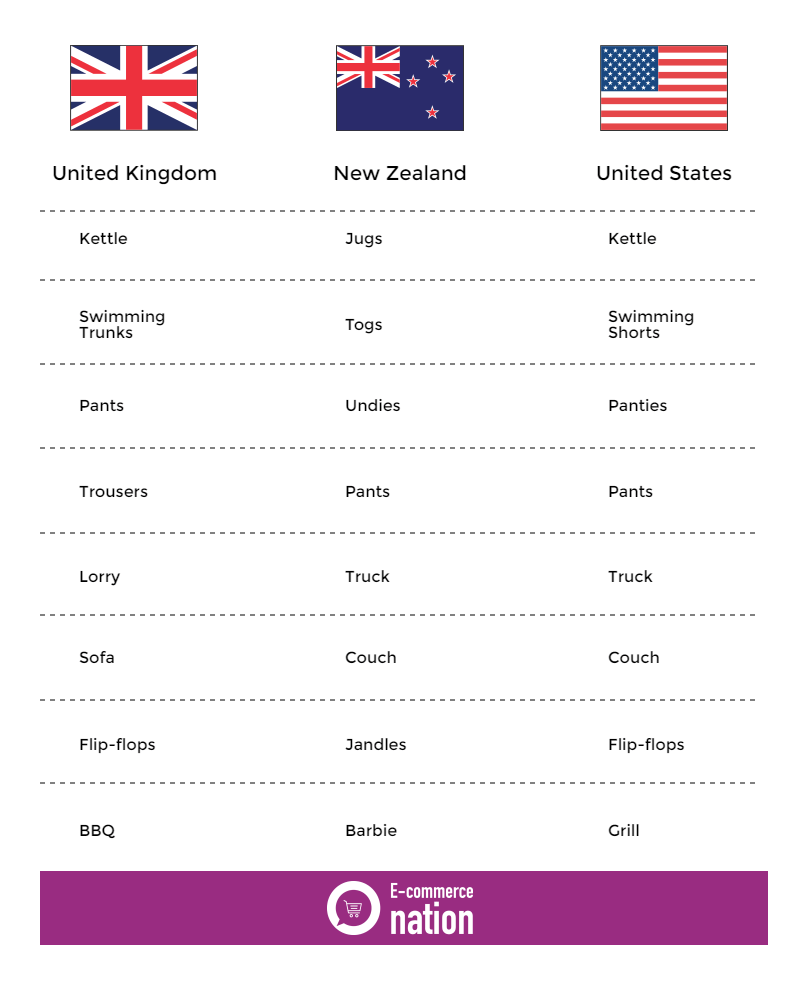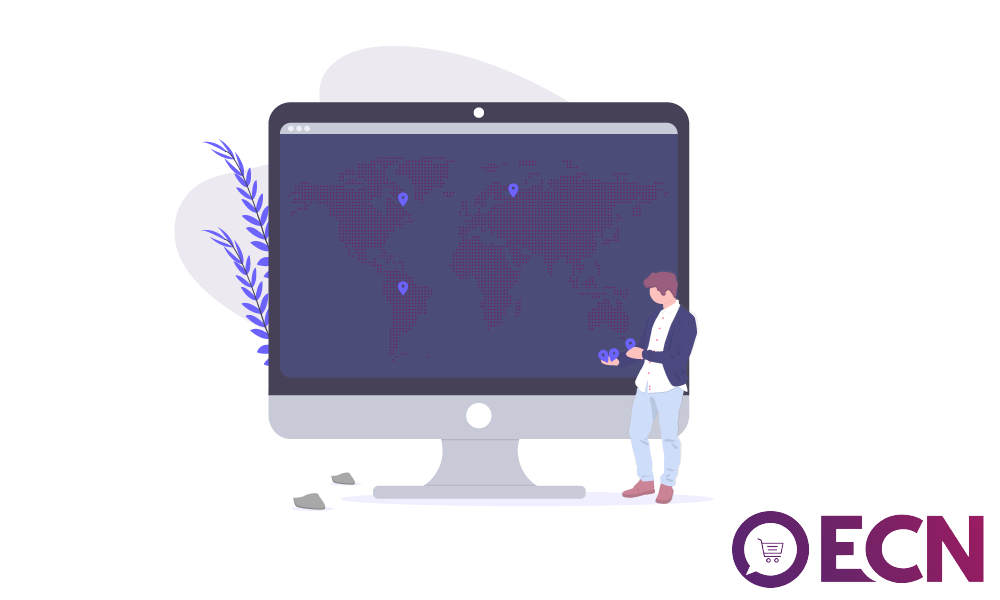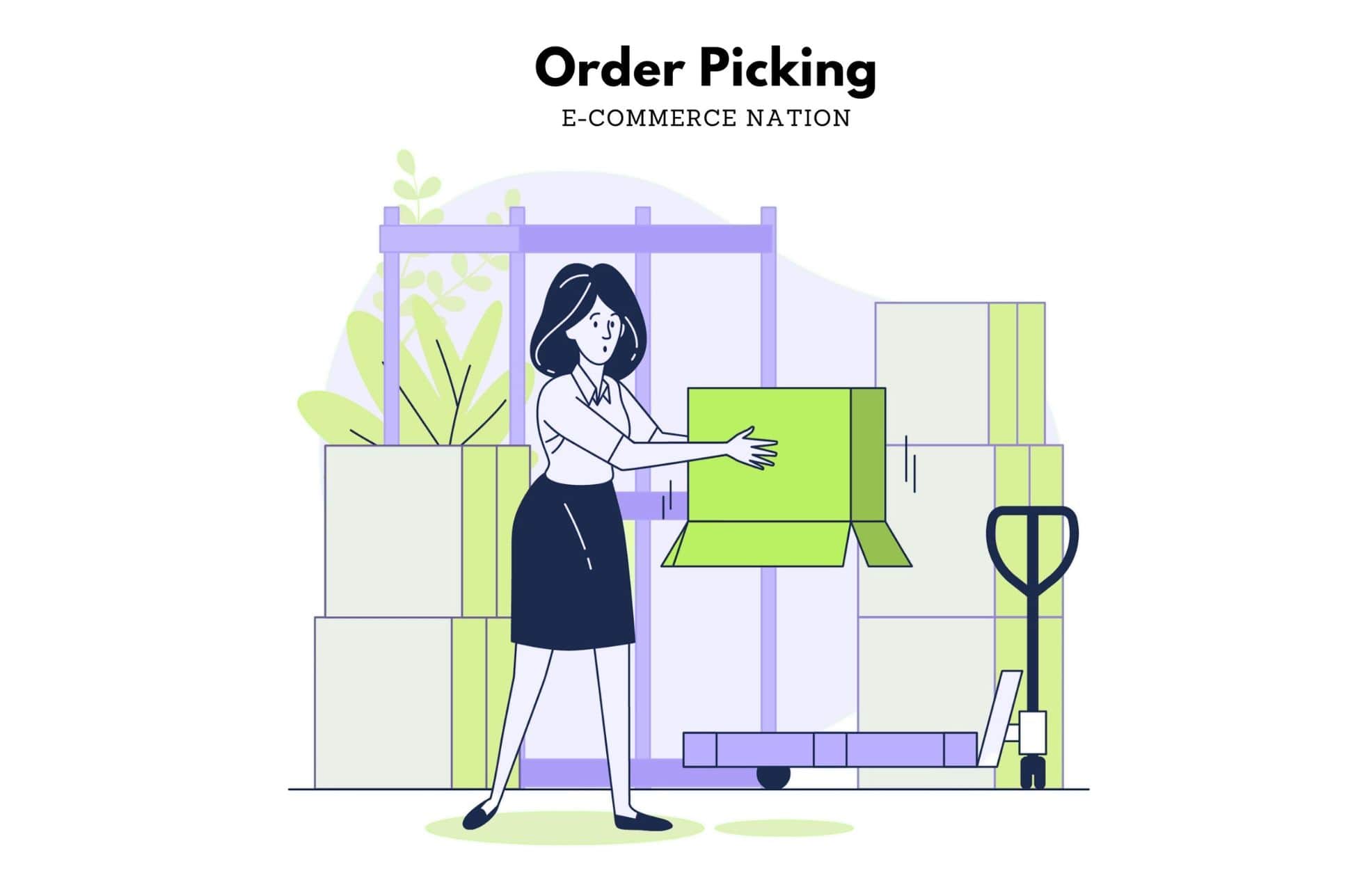We’ve said it before: cross-border e-commerce can be tricky. There is plenty that you need to do to get your online store ready for a foreign market- no matter how close you think that market is to your domestic one. Selling online internationally, however, is far easier than it used to be. When you notice you’re starting to sell more and more in a particular country before you start pushing your marketing it’s important to get your website ready for this new location. To help you get ready I’ve prepared a list of essentials do’s and don’ts to guide you through this daunting process.
The Do’s of Cross-Border E-Commerce
There are certain things you absolutely must do when preparing your e-commerce for international business. When localising your cross-border e-commerce, it’s important to do all of these things and to not cut corners.
1. Do Localise your SEO campaigns and online advertising
Ideally your chosen online platform will allow you to produce localised SEO campaigns. If this is the case, it’s beneficial to familiarise yourself with the key search terms and keywords popular in your chosen location, regardless of whether it’s your native tongue or not. Actually, people in other markets don’t share the same culture as you. Naturally, they won’t react the same when hearing or reading a word as you do. Thus, you will need to adapt the expressions and requests used on search engines to sell more on these said markets. To have an effective SEO campaign, a quick analysis of your competition’s campaigns can be an important thing to do.
There are regional phrases and terms unique to particular English-speaking countries that should be noted, especially if you’re aiming to sell products that are better known by a nickname or have different connotations across locations. A few of our favourite examples are:

2. Do Research your local competition
It’s surprising how much you can learn about your new location by researching your regional competition. You may find that the service or products you offer fill a gap in the market this location, whilst you struggle to find a foothold against local competition in another. Market research will enable you to get the lay of the land no matter where you aim to sell, and will allow you to set realistic expectations on pricing and market share.
The easiest way to weigh up the competition is by researching online. Google for instance have multiple domains around the world, which you can use to research your local competitors through their Google Shopping and Google Maps services. This can be a quick and simple method of surveying the marketplace so you can figure out where and how you can integrate your business.
3. Do Offer localised payment options
When establishing a new localised version of your e-commerce website, it’s essential to ensure what currencies your payment merchant accepts and what extra costs may be incurred from this. This kind of information can vary, so we recommend checking in with your account manager or researching online to see where your limitations are. Secondly, you need to check which payment methods are dominant in the locale you are targeting and whether you can integrate it into your business.
For example, the Netherlands’ leading payment software solution is iDeal, which equates for up to 56% of all online payments and outnumbers traditional methods like direct debit payments. However in China, Alipay is the most popular choice for online payments.
Traditional payment methods are expected to decline further in future, so if there is a leading payment solution for your chosen locale, we recommend exploring ways to integrate it into your website. By doing so, the checkout process becomes familiar and straightforward for your new customers, which helps boost consumer confidence and makes the order process easy to complete.
4. Do Explore international and localised shipping options
You could continue to ship out your products the way you’ve always done, but a one size fits all approach could be to your detriment. This is where localised fulfilment could help you. By finding a provider based in your target locale, you can offer cheaper shipping for your international customers, as opposed to paying out expensive international shipping costs with larger delivery windows.
Shipping costs are always going to be an influential force in the consumer’s buying process, from your market research you should know whether the shipping options you offer are competitive or match your competitors.
We understand that organising localised fulfillment and arranging for stock to be shipped out can be a big investment, which is why we recommend a 3 option. By reducing shipping costs or product prices initially to ensure you are price competitive. This way you can measure how well your stock is selling in this new locale before you commit towards localised fulfilment and reinstate your prices.
5. Do you need local support?
This depends entirely on whether or not customer service is a vital part of your business. If the customer service experience you provide is important to your customers and business, then it will always be worth reflecting on how beneficial it has been in driving repeat sales. If your fantastic customer service has won you word of mouth marketing, long-term customers, and repeat sales, then it will be well worth your time to hire local support to help you secure your new locale.
A brilliant, cost-effective solution is implementing live chat functionality on your website. This allows for customers to reach out and gain feedback instantaneously, as 63% of online consumers have reported that they are more likely to return to a website that offers live chat; however, the main downside is that timezones may work against you and unless you have a team working to support your customer service, you could be inundated with chat notification at ungodly hours.
Another budget friendly approach could be sourcing a local company to support your international customers on your behalf with a local presence, saving you from having to set aside the time and finances to establish a regional office.
We always recommend improving on customer service, as studies consistently show that customers value the service experience they receive, sometimes even over pricing, when choosing a brand. If this applies to your business, then setting up a physical presence or integrating live chat functionality for your new locale could prove to be extremely beneficial.
The Don’ts of Cross-Border E-Commerce
There are just as many things you shouldn’t do in order to make your global venture a success. Let’s take a look further into the don’ts and why you should avoid them.
1. Don’t treat different countries the same
The worst thing you can do in business is treat different countries and markets the same. Assuming you can run the same UK promotion in China and America is to completely misunderstand its culture and consumer base. You will always need to educate yourself on your new target locale to ensure you understand the pressures and demands of its market.
Some example questions we have for you to investigate are:
- What is their timezone?
- What are their seasons and regional holidays? Could this affect the kind of stock you sell and promotions you could run?
- Can you sell all your products in this location? This is taking into account your stock, any shipping costs incurred, etc.
- What legal compliances need to be acknowledged; for example what are the terms for import duty, returns, or warranties?
- What is the sales tax in this locale?
2. Don’t take any shortcuts with content translations
It is heavily advised to not to fully rely on Google Translate or Babelfish services when translating content for new locales. Languages are intricate and layered with linguistic nuances, and you may find that these free services can misinterpret localised words or convey a different meaning than intended.
The smallest change in a single letter can drastically change the meaning: Papá = Dad / Father vs. Papa = Potato in Spanish.
And then of course, there are other times where Google Translate can reinterpret a sentence’s meaning, like with this example from the Apple website when iPhone 7 was released back in 2016:
English original:
iPhone 7 Plus doesn’t have just one entirely new camera system — it has two.
Dutch translation:
iPhone 7 Plus heeft geen enkel één geheel nieuw camera systeem — het heeft twee.
Dutch to English translation:
iPhone 7 Plus has no one entirely new camera system — it has two.
Dutch original:
iPhone is de populairste camera ter wereld. > iPhone is the most popular camera in the world.
As you can see above, the Dutch content isn’t a direct translation of the English original. which is why translated content usually isn’t a direct translation. With this in mind, don’t preoccupy yourself with translating your content exactly word for word; by working with a copy editor or native speaker, you can convey your message without worrying about misinterpretations.
3. Don’t overlook national holidays
Create promotional holiday material relevant to your target locale to ensure your brand resonates with your new customers. The Chinese New Year is a major celebratory event, akin to New Years in Britain, and often promoted by Chinese retailers with extravagant events and sales.
It is very important to research national holidays for your new location, by creating local holiday material it will help you resonate will the local customers.
For example if you are promoting Christmas Jumpers for your UK customers then you should be advertising Christmas T-Shirts to your Australian customers. Don’t forgot to keep on top of local events, like Wimbledon in the UK or State of Origin in Australia.
4. Don’t just duplicate a product
When selling internationally, duplicating your content, stock, and prices, across multiple locales won’t always be the best strategy for your business. With sales taxes and currency conversions all taken into consideration, your pricing will differ dramatically across territories. For instance, all prices are listed exclusive of sales tax in the USA regardless of whether you are selling B2B or B2C, as taxes are applied later according to state. If your products all include tax in their list pricing, be sure to research the different tax classes around the world so that you don’t lose any profit.
Currency rounding also differs across countries and must be accounted for: prices are rounded to the nearest 10 cents in New Zealand, whilst in Australia it is to the nearest 5 cents. With this in mind it wouldn’t work in your favour to use the same pricing across both locales.
It’s also worth checking over your meta information and page titles to make sure there isn’t any language crossover.
5. Don’t create a new website (unless you absolutely have to)
Creating a new website and domain specifically for a new country is costly and can saddle you with extra admin work, in regards to maintaining the new website’s content. Although some e-commerce platforms offer international websites on this basis, there are other avenues to explore.
Before building your international site do your research and make sure your chosen platform provides you with the tools you need to succeed. Though there are many popular, leading e-commerce platforms, they won’t all be able to suit your business’ growing needs. Shopify offers site owners the option to open separate stores for each target locale, making it an unviable option for smaller businesses due to the amount of admin work needed and upfront costs.
Breaking into new markets can certainly be a terrifying experience, but with enough preparation, you’ll be ready to take on the world. In the words of Mark Zuckerberg: “The only strategy that is guaranteed to fail is not taking risks.”
Image credit : Katerina Limpitsouni





